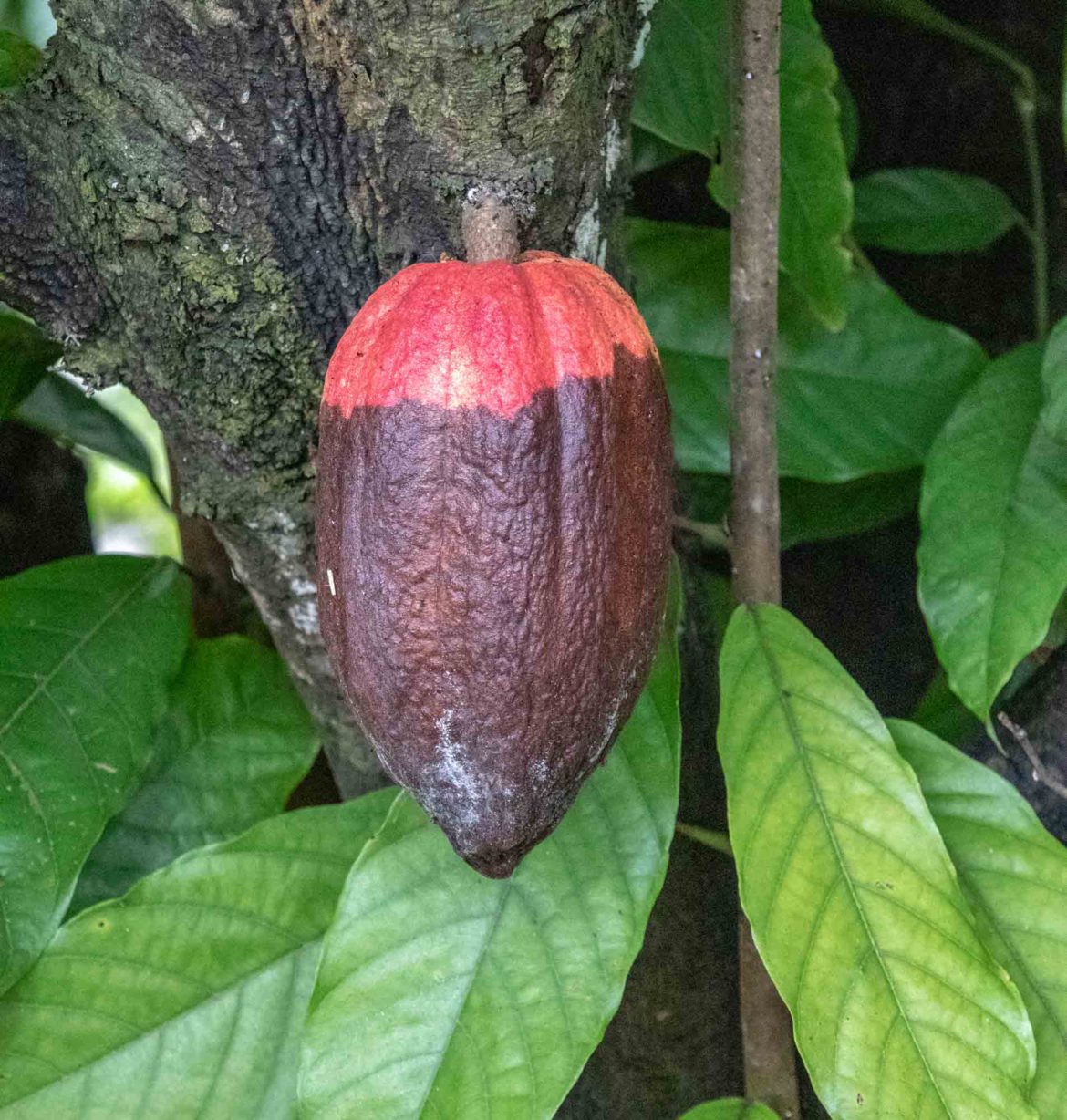Guatemala’s ancient culture is renowned as the “Birthplace of Chocolate.” Overall, I loved immersing in the hands-on tour at the family-owned Cacao Plantation, named Cakao just an hour’s drive from the Caribbean port, Santo Tomas. Like many of us, chocolate is one of my favorite treats in so many delicious ways. Therefore, experiencing its origin and understanding how it evolved over time was fascinating. So, read on to learn about everything I discovered this insightful day at this Guatemala Cacao Tour.
Cacao Tours in Guatemala – History
First, to set the foundation with some history. Known as the “Birthplace of Chocolate,” the Mayans, Incans and Aztecs mostly drank chocolate as an elixir. Considered the “Exquisite Beverage of the Gods,” the Cacao Tree was sacred. Usually, they preferred their drink bitter and spicy, adding chili and cornmeal. Its sacred qualities continued to influence from the altruistic owner of Cadbury Chocolates. For example, William Cadbury urged Americans and Europeans to stop doing business with companies performing slave labor.
My Guatemala Cacao Tour
Overall, I enjoyed my tour at the family owned Cakao, just an hour’s drive from the Caribbean port, Santo Tomas. We spent 3 hours observing and learning about the entire chocolate production from cacao pod to chocolate. This plantation sells only to German companies, where the organic standards are the highest in the world. Overall, we walked throughout the plantation to learn, sample and experience the essence of cacao or chocolate, from start to finish.
First, the owner and family members welcomed us, including adorable children shyly waving “Hola.” Then a guide takes us to the Cacao Plantation, along a walkway to learn about the agricultural practice of cacao.
Cacao Tours in Guatemala
From Tree to Chocolate Bar
Overall, here are 7 steps for processing chocolate:
Cacao Pods– First, the red Cacao pods grow from the trunks of small trees. The small tree trunks have big green leaves, with dark, hard red pods about the size of a papaya. Twice a year this plantation harvests the pods.
Fermentation – After that, inside the pods, many beans embedded in a white, juicy, semi-sweet pulp that ferments for about a week. Also, they used simple, big wooden boxes where the chemical reactions naturally happen.
Drying – Next, the cacao beans lay in the sun on a drying rack.
Roasting – Then, the beans are roasted in the hot, Guatemalan sun.
Winnowing -The shells are discard from the cacao bean.
Conching – Then, they evenly distribute cocoa butter in chocolate, for example, by mixing, agitating and aerating heated, liquid chocolate.
Tempering – Last, the chocolate melts and cools, so smooth when sets.
Chocolate Demonstrations and Samples
After the tour, we gathered on the back deck for a presentation by the owner on tempering chocolate. Plus, we savored many delicious samples. The home is large and airy with big, simple rooms, sparingly furnished. The best thing about the home is its setting, naturally nestled, similarly, like a part of the landscape in the hot, humid and lush Guatemalan jungle. Most importantly, I felt the family love, pride and tradition for their chocolate legacy.
Health Benefits and Sustainability of Chocolate
Besides its tasty properties, chocolate also has the bonus of being healthy, eaten in moderation. Also, keeping the ingredients pure without preservatives, sugar and dairy is necessary for health benefits. For example, Cacao has many antioxidants, decrease Blood Pressure, increases energy, benefits asthma and Alzheimer’s and is a natural diuretic.
Most importantly, cacao plantations promote sustainable agricultural practices. Cacao is grown in lowlands and stops erosion. Comparatively, plants like sugar cane and palm oil erode soil.
Overall…
My hands-on Guatemala Cacao Tour connected me with the essence of chocolate and its origins. Most importantly, this enables me to understand and appreciate the therapeutic and delicious qualities for one of my favorite foods. In other words, it’s very grounding and enlightening to understand how my food is grown, so I can make more responsible choices about investing in my health and sustainable companies.
Read More!
20 Top Things to Do in Historic Antigua, Guatemala
Guatemala’s Amazing Tikal Mayan Ruins Tour






